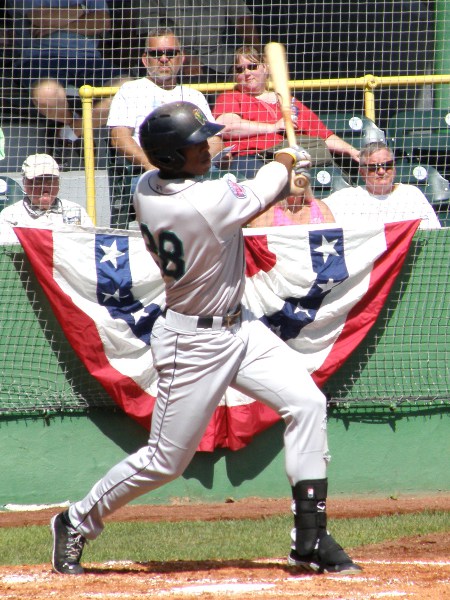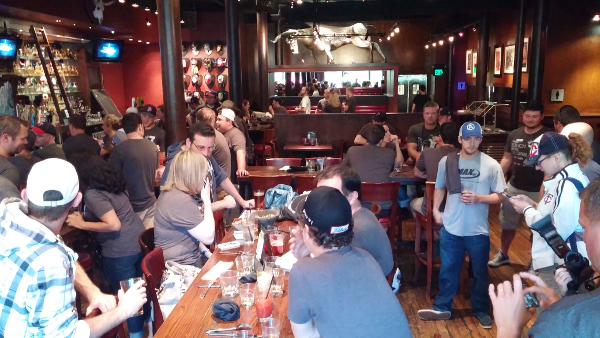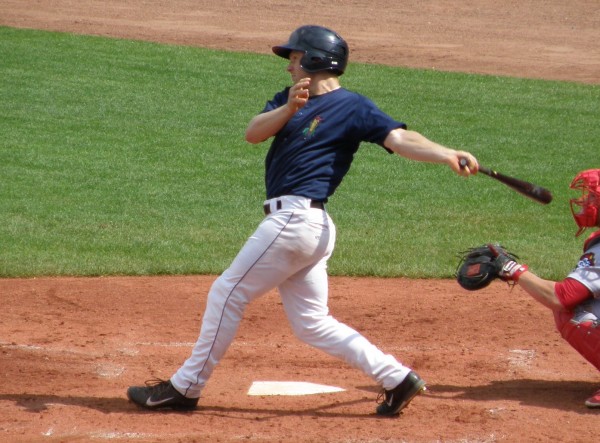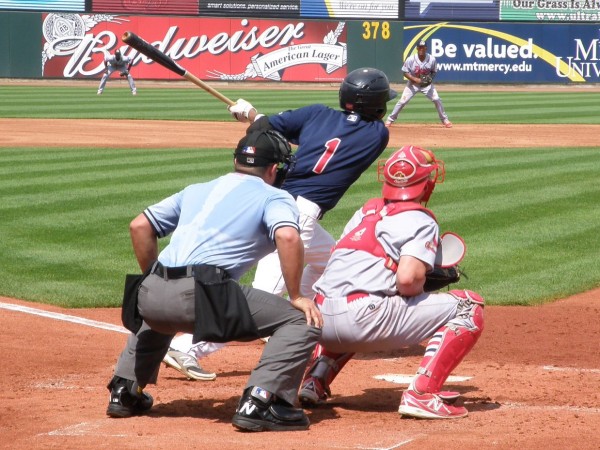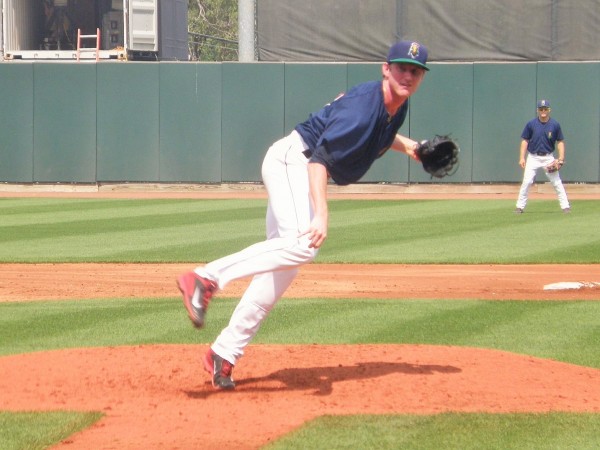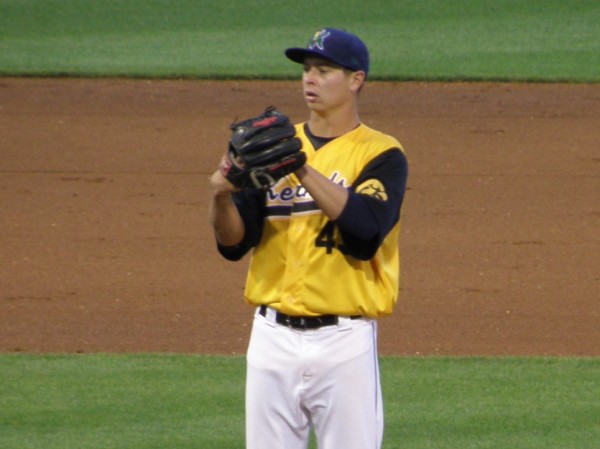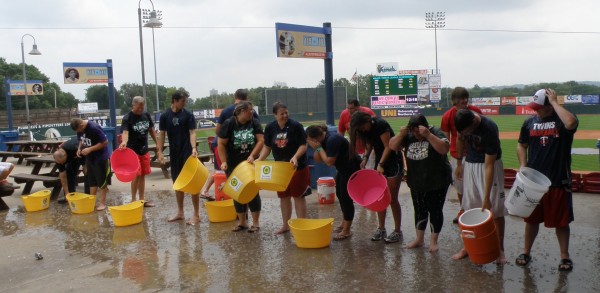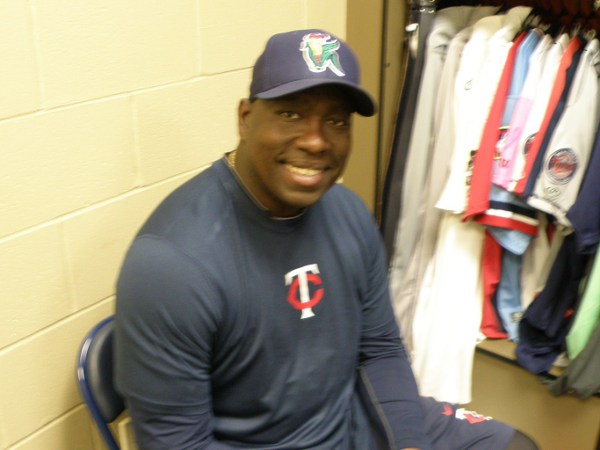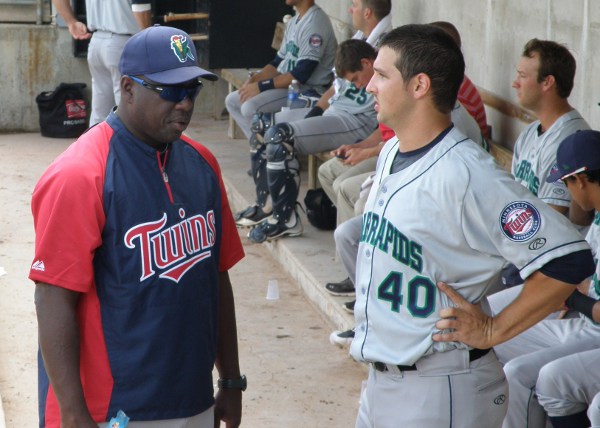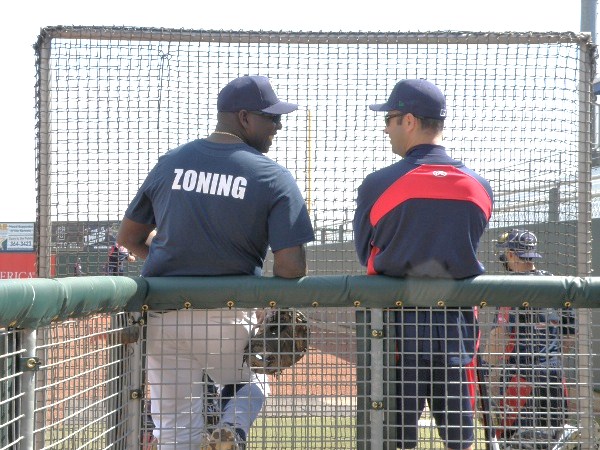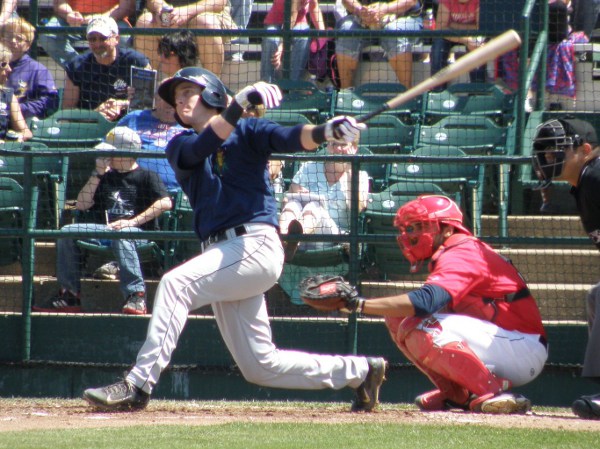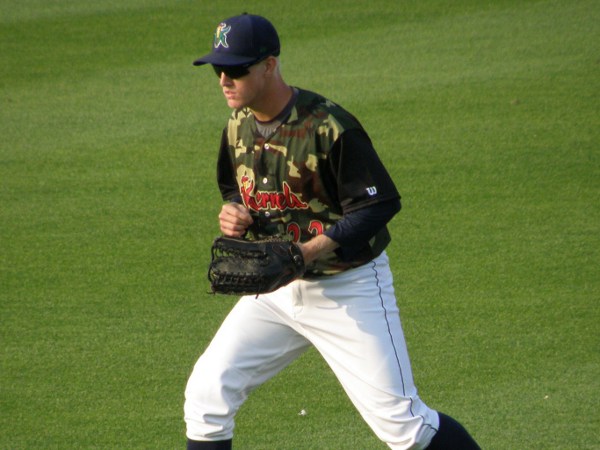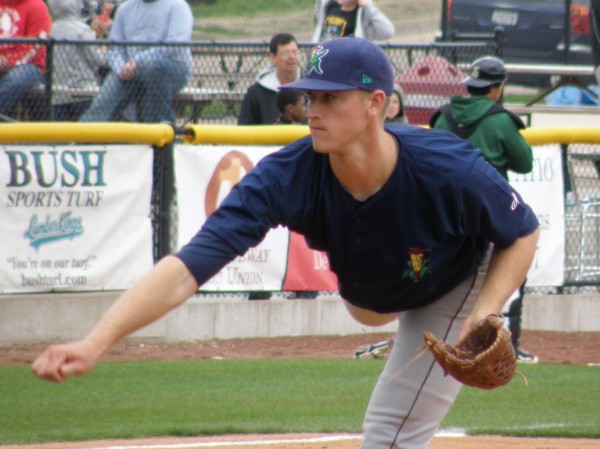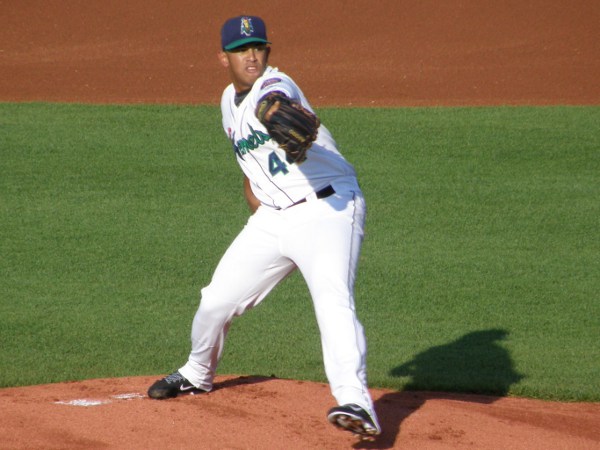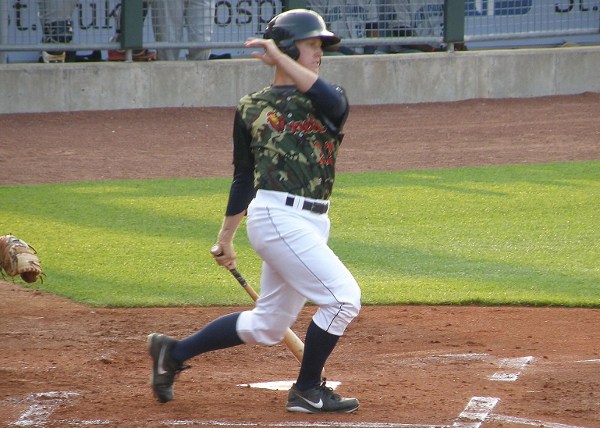A year ago, Jake Reed was beginning intrasquad workouts in Eugene, Oregon, as he prepared for his junior year at the University of Oregon. In the subsequent 12 months, the Twins’ prospect has seen a lot of the U.S.A. while pitching for the Ducks, then the Twins Rookie level team in Elizabethton, Tennessee, followed by the Cedar Rapids Kernels, and a trip to Fort Myers for instructional league. Now, he’s a member of the Salt River Rafters in the Arizona Fall League.
Reed was the Twins’ fifth round draft pick back in June, which means you won’t find him on any of last offseason’s “Top Twins Prospects” lists. You won’t likely have to look too far down this year’s lists to find his name, however.
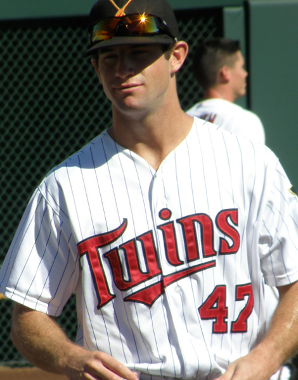
After signing with the Twins, he made four appearances in Elizabethton before being promoted to Cedar Rapids. Between the two stops, he put up a 0.29 ERA over 20 relief appearances. He struck out 39 batters, while walking just three.
That kind of work earned him a coveted spot in the Arizona Fall League where, as difficult as it may be to believe, he’s actually improved his ERA to a perfect 0.00 in his first six appearances for the Rafters.
As you might expect, Reed is pretty happy with how his professional career has gone, thus far.
“It’s been just a great experience,” Reed said on Tuesday, before the Rafters beat up the Glendale Desert Dogs 14-2. “Just from the time I got drafted, with my parents there in Eugene with me, to sitting here now in Arizona. To still be playing in the fall, it’s pretty special. It’s been a great ride. I couldn’t have wished for a better first half-season.”
Reed was one of two Twins prospects, along with outfielder and top Twins prospect, Byron Buxton, who were named to represent their team in the AFL’s “Fall Stars Game” this Saturday. Not bad for a guy who was surprised when Kernels manager Jake Mauer and pitching coach Ivan Arteaga gave him the news that he was headed to Arizona this fall.
“When {Mauer) called me in, there was a couple weeks left in the season. I knew the Miracle were going to be in the playoffs, so I thought I was maybe going to be going up there to help them,” Reed recalled. “But they sat me down and originally Ivan kind of played a joke on me and asked if I wanted to go play (winter ball) for him in Venezuela. I was like, ‘oh yeah, make four grand a month,’ and I said, ‘absolutely.’ He said, ‘No we were just kidding. We’re sending you to fall league.'”
Most AFL players have at least reached Class AA, but organizations are allowed a very limited number of roster spots for players who have not reached beyond Class A ball. That says something about how the Twins view Reed.
Mauer and Arteaga told Reed that the Twins minor league director, Brad Steil, had contacted them and asked whether they thought Reed was ready for AFL, where he’d be facing a number of the top prospects in baseball.
“They thought I was,” said Reed. “They asked me if I wanted to and obviously I wasn’t going to turn that down.
“It was a big surprise for me. I was pretty shocked. I’m not saying I don’t think I deserved it, but with the guys that come out here normally, it’s the bigger prospects and it’s my first half season, so in that aspect, I didn’t expect it much.”
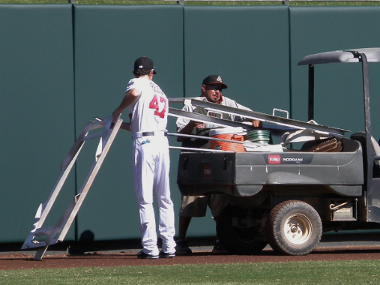
Often, organizations are cautious about sending pitchers to Arizona the year they were drafted due to the number of innings they’ve racked up on their arms, between their final college season in the spring and their first partial season of professional ball in the summer. That wasn’t an issue for Reed, however.
“I’d started my first two years of college so I was accustomed to going 100 innings a year and I threw 40 maybe in college and 30 in the summer, so I was only at 70. I had more in my tank. The inning limit hasn’t been an issue at all.”
It’s not like they overtax the arms in Arizona, anyway. Each club carries about 20 pitchers to make sure none of them are overworked. Even relievers, like Reed, typically will pitch an inning or two and then get a couple days off before their next appearance.
Fall League is an opportunity for Reed to show what he’s got in front of a large group of scouts from literally every organization in professional baseball, but it’s also a chance to hone his craft. Reed was told the Twins wanted him to work on his change up, on “tightening up” his breaking ball and on stopping the running game.
Of course, his 0.75 WHIP means he’s not getting many opportunities to work on controlling that running game this fall.
“I haven’t thrown a change up much,” Reed admitted, “but my breaking ball, at times, has been a lot better than it has been. I think the biggest thing, though, is just maintaining the command that I had all summer. Getting ahead of guys, not walking guys.
“As long as I keep throwing strikes, I think I’ll keep doing alright.”
While Reed and half a dozen other Twins farmhands have been toiling in the Arizona sun, Twins General Manager Terry Ryan has been looking for a new manager. Reed and the others are following that story closely, as you can imagine.
“Absolutely,” Reed confirmed. “Ultimately, that’s where we want to end up and ultimately, we want that to be our manager. Right now it seems kind of far-fetched, but hopefully, that’s the guy we’re going to be playing for eventually.
“Yeah, we all follow everybody on Twitter, so we all see what’s going on. We keep up with it. All the Twins are next to one another in the locker room. Whenever we see a new Tweet about another guy, we’re always talking about it. But you know what, we trust Terry (Ryan), we trust everybody else in our organization to get somebody that will turn this thing around for us. We hope to be a big part of that, especially the young guys in our organization.”
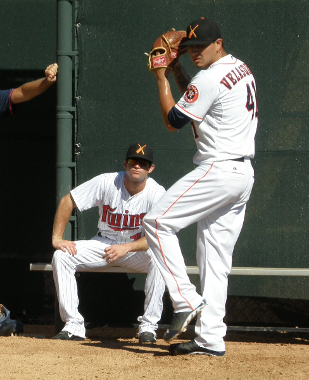
Reed and the others are getting a little taste of what it’s like to be treated like a big leaguer during their time in Arizona. Games are played at Major League spring training facilities and Salt River plays their games at the complex shared by the Diamondbacks and Rockies. The Rafters use the D’Backs’ big league clubhouse.
It didn’t take Reed long after arriving to figure out he was no longer at the Twins’ minor league facility in Fort Myers, where he had been working during his time in the postseason instructional league.
“The facilities in Ft. Myers are great, don’t get me wrong, but going from a big locker room with hundreds of lockers to the big league locker room at a big league facility, it honestly kind of took my breath away,” Reed said. “There’s twelve TVs in there, I mean everything you can imagine in a locker room. Unbelievable. Then obviously, getting to play here every day, it doesn’t get old, for sure.”
Reed had a chance earlier in the summer to get another glimpse of what it means to be a Major Leaguer. Joe Mauer and Rick Nolasco had concurrent rehabilitation assignments in Cedar Rapids and that experience stands out in Reed’s mind as a highlight of his time with the Kernels.
“When Joe and Ricky came, that was pretty special. Joe Mauer is such a great guy, and Ricky is, too, but just having him in the locker room was pretty special. Just seeing him go about his work and how he respected the game when he was playing and how he talked to other guys on the other team when they’d ask him questions. Just a great guy.
“On his way out, before he left, he went around the locker room and shook everybody’s hand. So that was unbelievable to me, a guy of that stature being able to take the time to shake every single person’s hand in the locker room was pretty special.”
The Twins are already showing signs that they may be rebuilding their big league bullpen in 2015. Reed’s performance at all levels this year has him in position to be fast-tracked by the organization if he can keep performing.
Reed’s success has even altered his own expectations of himself heading toward 2015.
“It’s definitely different now than it was when I signed and playing in Cedar Rapids,” he acknowledged. “I don’t know what’s out of the picture for next year, because I haven’t had the chance to talk to Terry or anybody else in the organization. They want to see guys excel in the minor leagues and prove that they’re ready for the big leagues, but I’m not sure. I’m sure I’ll have a better idea here pretty soon. We’ll see what happens. We’ll see where I go for spring training. There’s just a lot up in the air.”
Reed has not heard, yet, whether he’ll be getting an invitation to the Twins’ big league spring training camp.
“No, that’s the thing, too. I think I’ll have a better idea here pretty soon, because it’s kind of important when you want to get your body ready for a certain time, you want to be in shape for a certain time. So hopefully I find out soon.”
Reed started to say he would not be disappointed if he doesn’t get the invitation to the big league camp in February, but then smiled and corrected himself.
“I will be disappointed,” he admitted, “but I’ll understand. Ultimately, it’s not up to me, I just need to keep pitching well and hopefully it works out in my favor.”
But that’s a matter for another day. Right now, Reed has a couple more weeks of pitching in the Arizona heat and then a well-deserved break.
“I’ve literally been pitching for over a year straight,” Reed said, alluding to having started his workouts at Oregon a year ago. “I’m starting to kind of feel it now. A break off of throwing would be nice.”
Pitchers and catchers report to Fort Myers by mid February, so it may not be a very long break for Jake Reed.

